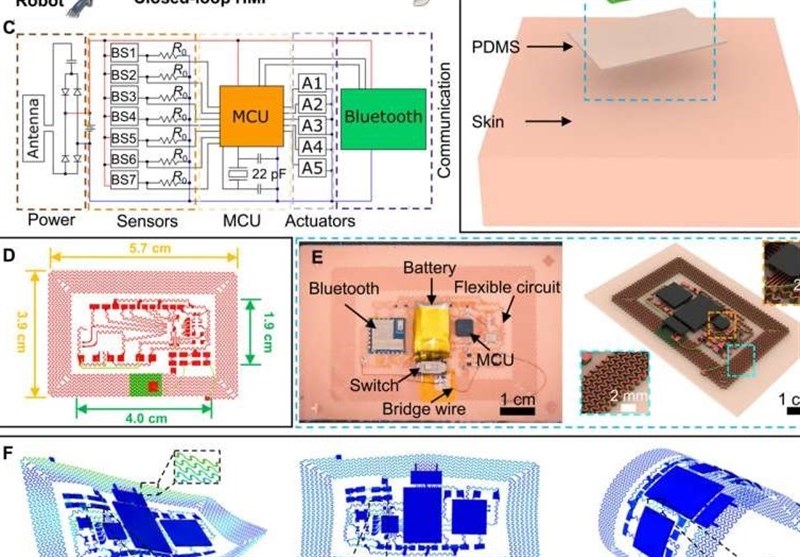Are you ready for a brothel staffed with "female" robots or virtual reality porn? It will require 5G and beyond technology systems and infrastructure to build the singularity out including robots. The internet was originally developed and brought online by the military. And they were gracious enough to allow you to sublimate yourselves to the singularity. What is going to pay for all this technology? Cryptocurrencies. Cryptocurrencies that Russia is set to ban. That is why the cryptocurrency geeks like 5G so much. The new era of sextech paid for with cryptocurrency using robots to achieve singularity. Pretty cool hey? Issuing challenges through helium networks you can earn cryptocurrencies fornicating with robots. Instead of Proof-of-Coverage in these hotspots or networks, it will be Proof-of-Sex.
________
Source: Tasmin News Agency
Chinese Scientists Develop Electronic Skin with Haptic Feedback
January, 19, 2022
Crafted by a team of scientists from City University of Hong Kong, Dalian University of Technology, Tsinghua University, and the University of Electronic Science and Technology of China, the device is sensitive enough to capture movement and stress factors, for instance twisting and turning.
Engineers have been developing robots that can be controlled remotely by a human operator, but, as the researchers note, most such systems are bulky and difficult to control. They also generally provide little feedback other than a video stream. In this new effort, the researchers in China sought to develop a more user-friendly system. To that end, they created what they call an electronic skin—a flexible skin patch that can be applied to the skin of a human controller that captures both movement and stress factors such as twisting and turning, TechXplore reported.
The patch has sensors for reading information from its own sensors, wireless transmitters to send the information it is receiving, and small, vibrating magnets that assist with haptic feedback. Groups of patches are placed on the skin of an operator at important junctures such as the fold on the front of the arm over the elbow. Some of the sensors in the patch consist of wires placed in a zigzag fashion, which are pulled straighter as the patch is bent, providing information about body movement—bending an arm at the elbow, for example, or releasing it.
All of the combined data from the patches allow an operator to control a remote robot without having to wear clumsy gear. But there is more to the system: The patches are also applied to parts of the robot to allow the operator to receive feedback. Putting patches on the robot's fingertips, for example, would allow the operator to feel the hardness of an object held by the robot, courtesy of the tiny vibrating magnets.
With the use of Bluetooth, the feedback signals are delivered in an impressive four microseconds, with that figure increasing manifold when operating through a Wi-Fi network, according to the article. However, regardless of how the data is transmitted, the delay is below the 550 microseconds an average human takes to react to tactile stimuli anyway.
The device's battery allows for more than an hour of non-stop work, while in standby mode it can last for up to two weeks.
Although still a prototype, the system could come in handy down the road, with bomb disposal and radioactive waste cleanup being just some of the areas where robotic assistance would likely be appreciated.
________
Losing my humanity...
Predictive programming assists the transition of the species into the singularity. Elon Musk says, "the world should be concerned about a reduction in the population." See how it works? Here's the solution: synthetic wombs. Thanks, Elon, drip feeding your geek fans the singularity so the emotional impact of the harsh reality will be less of an impact? There should be absolutely no doubt Elon Musk is connected to secret societies and mystery school adepts. The beginning of the end of the soul? Outsourcing pregnancy to machines.
Related:
News update for 22 January 2022:

No comments:
Post a Comment
Note: Only a member of this blog may post a comment.